Features
Atomic Bombing of Hiroshima: 6th August Seventy-five years ago
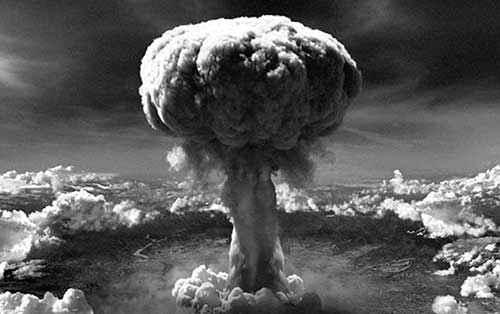
By Kirthi Tennakone
The dwellers of the Japanese city Hiroshima resorted to their routine on 6th August 1945. That day the morning sky had been clear – people observed three air planes and descending parachutes. These are happenings to be expected at the time of a war and largely ignored.
Around 8.15 am a flash of light intensely brighter than the sun and a burning sense of heat terrified the population. The noiseless instant effect reacted more severely over a circular area of radius approximately 1 kilometer. Men, women and children exposed to the flash were incinerated to ash or fatally burnt. Cloths crumbled to pieces or spontaneously ignited – particularly if the shade is darker. A man dressed in white was burnt lightly, but his wife in black beside him died as a result of harsh burning. Most people within the range succumbed immediately- very few shielded by thick concrete survived. After fraction of a second a blast wave flattened almost every building in an area of nearly 40 square kilometers. A fireball formed created in the atmosphere expanded rapidly blowing a horrendously hot wind – setting fires everywhere up to a distance of about 4.5 kilometers from the centre. The pressure of the blast wave and heat of the rushing wind killed or wounded many more people. Expanding and a rising fireball created a white plume extending to the atmosphere up to a height of 6100 meters darkening the city as if night has befallen. Around 9 am a black toxic rain poured over a large area, sickening those who got wet. The death toll in the day of the incident exceeded 40,000 and subsequent mortality resulting from injuries was estimated to be more than 100,000.
ATOMIC BOMB
The Japanese government and most of the world at large could not immediately fathom how a ferocious calamity unheard previously was inflicted. A devastation of such magnitude would require dropping thousands of most powerful conventional bombs simultaneously – a technical impossibility. On August 7th, the American President Harry Truman announced ‘It is an atomic bomb. It is a harnessing of the basic power of the universe. The force from which the sun draws its power has been loosed against those who brought war to the Far East’. He further stated that the bomb had more power than 20000 tons TNT- more than 2000 times the blast power of British Grand Slam which is the largest bomb ever used in history of warfare.
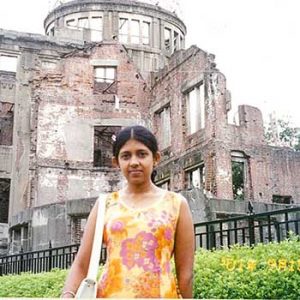 The bombs based on detonators such as tri-nitro toluene (TNT) derive energy by breaking of the molecules of this substance into lighter more stable fragments. In contrast atomic energy is released when the nucleus of the uranium atom disintegrates into lighter nuclei – a process referred to as nuclear fission. A calculation based on Einstein’s theory of relativity revealed that the energy liberated in fission of uranium is about one million times the equivalent weight of ordinary explosives. Fission is triggered by hitting the uranium nucleus with a neutron. When the nucleus breaks-up several additional neutrons are emitted. Hungarian-American physicist Leo Szilard speculated extra neutrons might disrupt other uranium nuclei causing an explosive chain reaction–a possibility of making a dangerous weapon. In 1939 he persuaded Albert Einstein to write a letter to President Franklin Roosevelt pointing out the urgency of the United States engaging in this effort – otherwise the consequences could be disastrous if Adolf Hitler develop a nuclear weapon. United States Intelligence found Germany had already started to work on the problem, hastening President Roosevelt to appoint a committee replying Albert Einstein. Soon the research work aimed to develop a nuclear bomb was commissioned as the Manhattan Project – under scientific leadership of the Robert Oppenheimer and a team of several other eminent physicists excluding Einstein. Perhaps Einstein was considered too much even for a project of this nature because of his extreme radicalism and pacifist views.
The bombs based on detonators such as tri-nitro toluene (TNT) derive energy by breaking of the molecules of this substance into lighter more stable fragments. In contrast atomic energy is released when the nucleus of the uranium atom disintegrates into lighter nuclei – a process referred to as nuclear fission. A calculation based on Einstein’s theory of relativity revealed that the energy liberated in fission of uranium is about one million times the equivalent weight of ordinary explosives. Fission is triggered by hitting the uranium nucleus with a neutron. When the nucleus breaks-up several additional neutrons are emitted. Hungarian-American physicist Leo Szilard speculated extra neutrons might disrupt other uranium nuclei causing an explosive chain reaction–a possibility of making a dangerous weapon. In 1939 he persuaded Albert Einstein to write a letter to President Franklin Roosevelt pointing out the urgency of the United States engaging in this effort – otherwise the consequences could be disastrous if Adolf Hitler develop a nuclear weapon. United States Intelligence found Germany had already started to work on the problem, hastening President Roosevelt to appoint a committee replying Albert Einstein. Soon the research work aimed to develop a nuclear bomb was commissioned as the Manhattan Project – under scientific leadership of the Robert Oppenheimer and a team of several other eminent physicists excluding Einstein. Perhaps Einstein was considered too much even for a project of this nature because of his extreme radicalism and pacifist views.
Leo Szilard with Albert Einstein
Despite theoretical soundness of the argument of achieving an explosive nuclear chain reaction, the Manhattan project encountered many astounding practical challenges. Natural uranium occurs in two forms named as isotopes U(238) and U(235). A chain reaction is feasible only with U(235) occurring as 0.7 percent of the metal found in the uranium ores. Furthermore to initiate a chain reaction at least a critical mass of about 60 kilograms of U(235) is required. Refining the ore to obtain this amount was an arduous costly task. Another option explored has been to use plutonium instead of uranium. The advantage of the latter is the smaller critical mass 5-10 kilograms. Plutonium is not found in nature can be synthesized – again a time consuming costly affair. Expenses of the project ran to 100 million dollars a month!
The other hurdle was assembling of the critical mass.
The requisite amount of uranium or plutonium cannot be simply cast as an ingot. Moment the critical mass which depend on shape and density of the sample is reached. The chain reaction propagate emitting radiation, because even one neutron is sufficient for triggering. Some neutrons always exist in the environment and also produced by spontaneous fission uranium. A method planned was to collide two pieces of uranium in a gun-like device using dynamite so that their union creates the critical mass. Another method considered was casting uranium or plutonium into a sphere of calculated size and implode it to increase the density by firing an appendage ordinary explosives. These methods needed to be secured foolproof and tested.
TESTING THE BOMB
After three years of intensive activity, scientists and engineers at the Los Alamos Laboratory assembled an atom bomb on 13th July 1945. It was a plutonium device containing around 6 kilograms of this metal in the form of a sphere. Why was a plutonium bomb instead of uranium chosen for testing? The amount of weapons grade uranium available at that time was sufficient to make just one bomb, planned to be fired by the gun mechanism. Plutonium of much lower critical mass, adequate for several bombs was ready in the processing line. Furthermore, the implosion firing mechanism worked out for plutonium bombs demanded experimental confirmation.
Including accessories the bomb nicknamed ‘Gadget’ weighed nearly 5 metric tons. Gadget was transported to the testing site in the New Mexico desert and hoisted to a 100 m high steel tower. The bomb was scheduled to be exploded at 4 am 16th July 1945. However because of bad weather the time was pushed forward to 5.30 am. Scientists stationed 10 km away eagerly awaiting to watch the test were concerned. Some doubted whether the bomb would turnout to be a dud. Other pointed its power might exceed the expectation and pose danger to observers and community in the neighbourhood. Emphasizing this point, Edward Teller who later came to be known as the father of the hydrogen bomb distributed suntan cream.
When the trigger was switched-on at 5.30 am, the whole landscape was instantly lighted many times brighter than sunlight and a rising vividly coloured fireball appeared in the sky. The test was a success and a moment that changed the world forever. Seconds later the bang was felt, following a gush of wind. Physicist Enrico Fermi floated pieces of paper, timed their motion and quickly calculated the strength of the bomb, saying it is equivalent to 10 kilotons of TNT. More precise calculations carried out later revealed that strength was 22 kilotons.
BOMBING HIROSHIMA
The success of the atom bomb test was conveyed to President Truman but not publicly announced. general public inquisitive of the blinding flash and the bang were told an explosion occurred in an ammunition storage. President was planning to visit Germany to attend Potsdam conference – the famous big three Truman–Stalin–Churchill meeting. At the proceedings he hinted new development but did not elaborate. On 24th July Truman met Stalin casually and told him the United States has developed a weapon of unprecedented strength. Stalin did not react with excitement or interest and said ‘I hope the United States would make good use of it ‘. The reason for Stalin’s indifference became clear later. Soviet intelligence had been aware of the achievements in the Manhattan project.
Potsdam deceleration warned Japan to surrender unconditionally or suffer utter destruction – which Japan did not accept. Immediately the decision to drop atomic bombs on Japan was confirmed. The directive was said to be – hit Hiroshima, Kokura, Niigata or Nagasaki after 3rd August as weather permitted.
The bombing operation was assigned to Colonel Tibbets of the US Air Force. On August 6th early morning he took-off from Tinian Island air base in the Pacific carrying the bomb. Two other planes accompanied the B-29 bomber to monitor weather and parachute instruments to record the physical effects of the explosion. At about 8.15 am the pilot released the bomb from an altitude of 9.5 kilometers. The bomb fell down for 47 seconds and exploded at a height 600 meters above the ground – the triggering mechanism designed to explode the bomb in mid-air for the purpose of maximizing the destructive power. Tibbets who hurried away was at a safe distance of 18 kilometers when he observed the flash and the fireball.
The bomb aimed to the Aioi Bridge missed the target by 250 meters and detonated overhead Shima Hospital flattening it instantly. Amazingly the structure of the Hiroshima Industrial Promotion Hall almost at the epicenter did not collapse. A temperature exceeding 4,000 degrees Celsius burnt the roof killing everybody inside, but the peculiar way in which the shockwave approached, left the structural shell largely intact. This landmark ruin named Atomic Bomb Dome serve as a memorial for lives lost and a reminder for peace.
I (the author of this article) visited Hiroshima in the year 2000. My daughter then a high school student posed in front of the dome for a photograph and smiled. When I said this not a place to smile. A group of Japanese visitors at the site understood what I meant and emotionally expressed appreciation of my remark.
WORLD AFTERMATH HIROSHIMA
Even after Hiroshima attack, Japan did not surrender but vowed to fight. Soviet Union declaring war on Japan 8th August 1945 and United States dropping of a second atomic bomb on Nagasaki next day changed the situation. On 15th August 1945 the Emperor Hirohito agreed unconditional surrender effectively ending Second World War. Some celebrated the bombings implicating it’s a lesson to warmongering and crimes committed, but those died were innocent civilians. The horror atomic bombings particularly the late effects of radiation continued to uncover as days and months passed. Nevertheless there were glorifications of nuclear weapons. Many nations strived hard acquire them, boost their destructive power and develop strategic methods of delivery. Human desire for increasing power of self-destructive weapons did not end with atom bomb. In 1952 United States tested first hydrogen bomb or the thermonuclear device based on nuclear fusion – the opposite of fission where lighter nuclei similar to hydrogen fuse together to yield heavier nuclei liberating extra-large quantity of energy – thousands of times stronger than the Hiroshima bomb. In the following year, the Soviet Union exploded a similar weapon. Between 1950 -1962 the competition of super powers in detonating nuclear bombs polluted the atmosphere- increasing the incidence of cancer.
The Limited Test Ban Treaty of 1963 forbid atmospheric tests. However, underground tests continued and the 1996 Comprehensive Nuclear Test Ban Treaty of the United Nations could not be strictly enforced as some nations avoided the agreement. On July 2017, United Nations proposed the resolution – The Treaty on the Prohibitions of Nuclear Weapons. The enforcement of the agreement require signature and ratification of 50 states. To date of the 82 countries, who have signed the treaty, only 40 have ratified it. Some countries seem to abstain from signing and ratifying the accord on the presumption that those who might not agree will pose a threat – vicious circle contradicting attitudes. Global citizens worldwide and a number organisations advocating peace, campaign to prohibit nuclear weapons. Most vociferous among them are the survived victims of Hiroshima and Nagasaki- popularly known as ‘hibakusha’. Their pledge is ‘so that the people of future generations will not have to experience hell on earth, we want to realise a world free of nuclear weapons while we are still alive’.
The first sitting US President to visit Hiroshima was Barak Obama. On May 26th , 2016, talking to a gathering there, Obama said ‘Technological progress without an equivalent progress in human institutions can doom us. The scientific revolution that led to the splitting of an atom require moral revolution as well ’.
Human greed – the limitless urge to acquire material possessions – is blind to dangers ensuing in the horizon, threatening their own existence. Nuclear weapons and excessive burning of fossil fuels are two examples.
The author Prof.Kirthi Tennakone, National Institute of Fundamental Studies can be reached via ktenna@yahoo.co.uk
Features
Democracy faces tougher challenges as political Right beefs-up presence
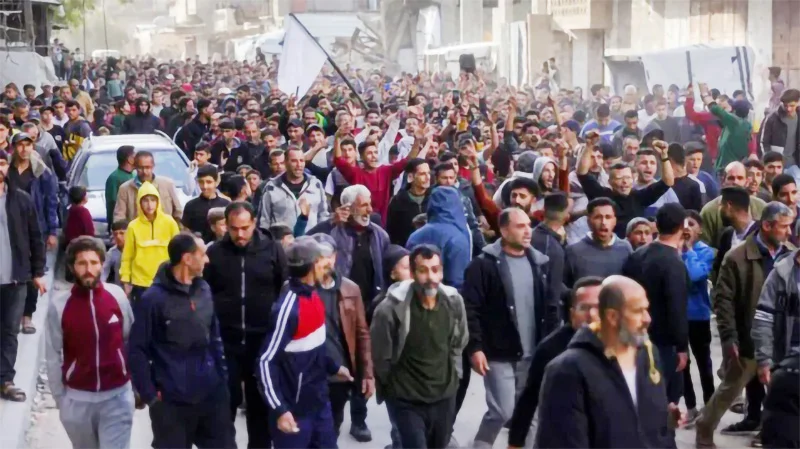
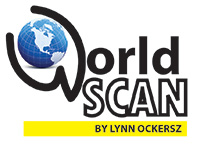 It is becoming increasingly evident that the democracy-authoritarianism division would be a major polarity in international politics going forward. It shouldn’t come as a surprise if quite a few major states of both East and West gain increasing inspiration from the ‘world’s mightiest democracy’ under President Donald Trump from now on and flout the core principles of democratic governance with impunity.
It is becoming increasingly evident that the democracy-authoritarianism division would be a major polarity in international politics going forward. It shouldn’t come as a surprise if quite a few major states of both East and West gain increasing inspiration from the ‘world’s mightiest democracy’ under President Donald Trump from now on and flout the core principles of democratic governance with impunity.
It is the political Right that would gain most might in this evolving new scheme of things. Whether it be the US itself, France, Israel or Turkey, to name just a few countries in the news, it is plain to see that the Right is unleashing its power with hardly a thought for the harm being done to key democratic institutions and norms.
In fact, Donald Trump and his Republican hard liners led from the front, so to speak, in this process of unleashing the power of the Right in contemporary times. It remains a very vital piece of history that the Right in the US savaged democracy’s most valued institutions on January 6, 2021, when it ran amok with the tacit backing of Trump in the US Capitol.
What was being challenged by the mob most was the ‘will of the people’ which was manifest in the latter’s choice of Joe Biden as US President at the time. To date Trump does not accept that popular verdict and insists that the election in question was a flawed one. He does so in the face of enlightened pronouncements to the contrary.
The US Right’s protégé state, Israel, is well on course to doing grave harm to its democratic institutions, with the country’s judiciary being undermined most. To cite two recent examples to support this viewpoint, the Israeli parliament passed a law to empower the country’s election officials to appoint judges, while Prime Minister Netanyahu has installed the new head of the country’s prime security agency, disregarding in the process a Supreme Court decision to retain the former head.
Such decisions were made by the Netanyahu regime in the face of mounting protests by the people. While nothing new may be said if one takes the view that Israel’s democratic credentials have always left much to be desired, the downgrading of a democratic country’s judiciary is something to be sorely regretted by democratic opinion worldwide. After all, in most states, it is the judiciary that ends up serving the best interests of the people.
Meanwhile in France, the indications are that far Right leader Marine Le Pen would not be backing down in the face of a judicial verdict that pronounces her guilty of corruption that may prevent her from running for President in 2027. She is the most popular politician in France currently and it should not come as a surprise if she rallies further popular support for herself in street protests. Among other things, this will be proof of the growing popular appeal of the political Right. Considering that France has been a foremost democracy, this is not good news for democratic opinion.
However, some heart could be taken from current developments in the Gaza and Turkey where the people are challenging their respective dominant governing forces in street protests largely peacefully. In the Gaza anti-Hamas protests have broken out demanding of the group to step down from power, while in Turkey, President Erdogan’s decades-long iron-fist rule is being challenged by pro-democracy popular forces over the incarceration of his foremost political rival.
Right now, the Turkish state is in the process of quashing this revolt through a show of brute force. Essentially, in both situations the popular demand is for democracy and accountable governance and such aims are generally anathema in the ears of the political Right whose forte is repressive, dictatorial rule.
The onus is on the thriving democracies of the world to ensure that the Right anywhere is prevented from coming to power in the name of the core principles and values of democracy. Right now, it is the European Union that could fit into this role best and democratic opinion is obliged to rally behind the organization. Needless to say, peaceful and democratic methods should be deployed in this historic undertaking.
Although the UN is yet to play an effective role in the current international situation, stepped up efforts by it to speed up democratic development everywhere could yield some dividends. Empowerment of people is the goal to be basically achieved.
Interestingly, the Trump administration could be seen as being in league with the Putin regime in Russia at present. This is on account of the glaringly Right wing direction that the US is taking under Trump. In fact, the global balance of political forces has taken an ironic shift with the hitherto number one democracy collaborating with the Putin regime in the latter’s foreign policy pursuits that possess the potential of plunging Europe into another regional war.
President Trump promised to bring peace to the Ukraine within a day of returning to power but he currently is at risk of cutting a sorry figure on the world stage because Putin is far from collaborating with his plans regarding Ukraine. Putin is promising the US nothing and Ukraine is unlikely to step down from the position it has always held that its sovereignty, which has been harmed by the Putin regime, is not negotiable.
In fact, the China-Russia alliance could witness a firming-up in the days ahead. Speculation is intense that the US is contemplating a military strike on Iran, but it would face strong opposition from China and Russia in the event of such an adventurist course of action. This is on account of the possibility of China and Russia continuing to be firm in their position that Western designs in the Gulf region should be defeated. On the other hand, Iran could be expected to hit back strongly in a military confrontation with the US.
Considering that organizations such as the EU could be expected to be at cross-purposes with the US on the Ukraine and connected questions, the current world situation could not be seen as a replication of the conventional East-West polarity. The East, that is mainly China and Russia, is remaining united but not so the West. The latter has broadly fragmented into a democratic states versus authoritarian states bipolarity which could render the international situation increasingly unstable and volatile.
Features
Chikungunya Fever in Children
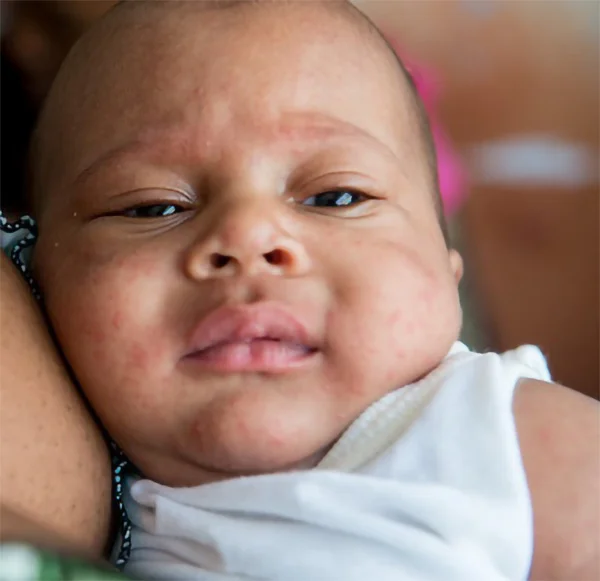
Chikungunya fever, a viral disease transmitted by mosquitoes, poses a significant health concern, particularly for children. It has been around in Sri Lanka sporadically, but there are reports of an increasing occurrence of it in more recent times. While often associated with debilitating joint pain in adults, its manifestations in children can present unique challenges. Understanding the nuances of this disease is crucial for effective management and prevention.
Chikungunya fever is caused by the chikungunya virus (CHIKV), an alphavirus transmitted to humans through the bites of infected Aedes aegypti and Aedes albopictus mosquitoes. These are the same mosquitoes that transmit dengue and Zika viruses, highlighting the overlapping risks in many areas of the world. It is entirely possible for chikungunya and dengue to co-circulate in the same area, leading to co-infections in individuals.
When a mosquito bites a person infected with CHIKV, it ingests the virus. After a period of growth and multiplication of the virus within the mosquito, the virus can be transmitted to another person through subsequent bites. Therefore, the mosquito acts as a vector or an intermediate transmitting agent that spreads the disease, but not as a reservoir of the disease. The spread of chikungunya is influenced by environmental factors that support mosquito breeding, such as stagnant water and warm climates. Urbanization and poor sanitation can exacerbate the problem by creating breeding grounds for these mosquitoes.
The clinical presentation of chikungunya in children can vary, ranging from mild to severe. While some infected children may even be asymptomatic and be normal for all intents and purposes, others can experience a range of symptoms, including a sudden onset of high fever, a common initial symptom. Pain in the joints of the body, while being a hallmark of chikungunya in adults, may be less pronounced in children. However, they can still experience significant discomfort and this must be kept in mind during processes of diagnosis and treatment. It is also important to remember that joint pains can present in various forms, as well as in different locations of the body. There is no characteristic pattern or sites of involvement of joints. Muscle aches and pains can accompany the fever and joint pain as well. A headache, too, could occur at any stage of the disease. Other symptoms may include nausea, vomiting, and fatigue as well.
A reddish elevated rash, referred to in medical jargon as a maculopapular rash, is frequently observed in children, sometimes more so than in adults. While chikungunya is known to cause such a rash, there is a specific characteristic related to nasal discoloration that is worth noting. It is called the “Chik sign” or “Brownie nose” and refers to an increased darkening of the skin, particularly on the nose. This discolouration just appears and is not associated with pain or itching. It can occur during or after the fever, and it can be a helpful clinical sign, especially in areas with limited diagnostic resources. While a generalised rash is a common symptom of chikungunya, a distinctive darkening of the skin on the nose is a particular characteristic that has been observed.
In some rare instances, particularly in infants and very young children, chikungunya can lead to neurological complications, such as involvement of the brain, known as encephalitis. This is associated with a change in the level of alertness, drowsiness, convulsions and weakness of limbs. Equally rarely, some studies indicate that children can experience bleeding tendencies and haemorrhagic manifestations more often than adults.
Diagnosis is typically made through evaluating the patient’s symptoms and medical history, as well as by special blood tests that can detect the presence of CHIKV antibodies (IgM and IgG) or the virus itself through PCR testing.
There is no specific antiviral treatment for chikungunya. Treatment focuses on relieving symptoms and allowing the body to recover on its own. Adequate rest is essential for recovery, and maintaining hydration is crucial, especially in children with fever. Paracetamol in the correct dosage can be used to reduce fever and pain. It is important to avoid aspirin, as it can increase the risk of a further complication known as Reye’s syndrome in children. In severe cases, hospitalisation and supportive care may be necessary.
While most children recover from chikungunya without any major issues, some may experience long-term sequelae. Joint pain can persist for months or even years in some individuals, impacting their quality of life. In rare cases, chikungunya can lead to chronic arthritis. Children that have suffered from neurological complications can have long term effects.
The ultimate outcome or prognosis for chikungunya in children is generally favourable. Most children recover fully within a few days or a couple of weeks. However, the duration and severity of symptoms can vary quite significantly.
Prevention is key to controlling the spread of chikungunya. Mosquito control is of paramount importance. These include eliminating stagnant water sources where mosquitoes breed, using mosquito repellents, wearing long-sleeved clothing and pants, using mosquito nets, especially for young children and installing protective screens on windows and doors. While a chikungunya vaccine is available, its current use is mainly for adults, especially those traveling to at risk areas. More research is being conducted for child vaccinations.
Chikungunya outbreaks can strain healthcare systems and have significant economic consequences. Public health initiatives aimed at mosquito control and disease surveillance are crucial for preventing and managing outbreaks.
Key considerations for children are that some of them, especially infants and young children, are more vulnerable to severe chikungunya complications and early diagnosis and supportive care are essential for minimising the risk of long-term sequelae. Preventing mosquito bites is the most effective way to protect children from chikungunya. By understanding the causation, clinical features, treatment, and prevention of chikungunya, parents, caregivers, and healthcare professionals can work together to protect children from this illness that could sometimes be quite debilitating.
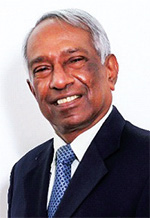 Dr B. J. C. Perera
Dr B. J. C. Perera
MBBS(Cey), DCH(Cey), DCH(Eng), MD(Paed), MRCP(UK), FRCP(Edin), FRCP(Lond), FRCPCH(UK), FSLCPaed, FCCP, Hony. FRCPCH(UK), Hony. FCGP(SL)
Specialist Consultant Paediatrician and Honorary Senior Fellow, Postgraduate Institute of Medicine, University of Colombo, Sri Lanka.
Joint Editor, Sri Lanka Journal of Child Health and Section Editor, Ceylon Medical Journal
Founder President, Sri Lanka College of Paediatricians – 1996-97)
Features
The Great and Little Traditions and Sri Lankan Historiography
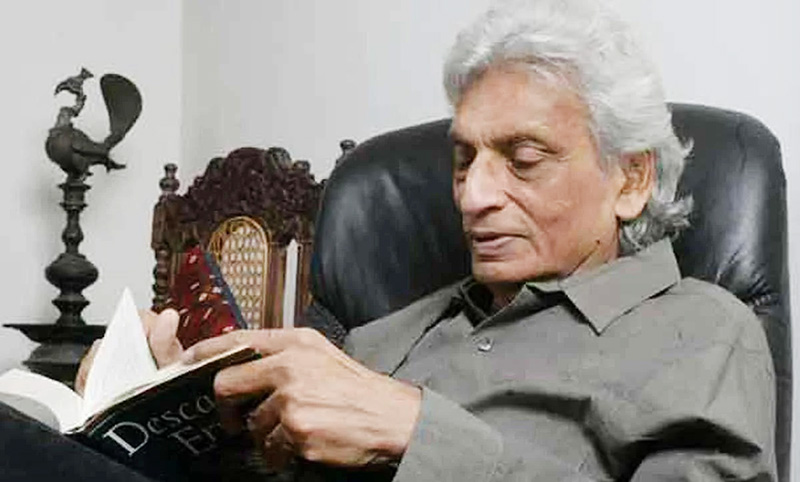
Power, Culture, and Historical Memory:
(Continued from yesterday)
Newton Gunasinghe, a pioneering Sri Lankan sociologist and Marxist scholar, made significant contributions to the study of culture and class in Sri Lanka by incorporating the concepts of great and little traditions within an innovative Marxist framework. His theoretical synthesis offered historians a fresh perspective for evaluating the diversity of past narratives.
At the same time, Michel Foucault’s philosophical intervention significantly influenced the study of historical knowledge. In particular, two of his key concepts have had a profound impact on the discipline of history:
1. The relationship between knowledge and power – Knowledge is not merely an objective truth but a manifestation of the power structures of its time.
2. The necessity of considering the ‘other’ in any conceptual construction – Every idea or framework takes shape in relation to its opposite, highlighting the duality inherent in all intellectual constructs.
These concepts challenged historians to rethink their approaches, prompting them to explore the dynamic interplay between knowledge, power, and culture. The existence of Little Tradition prompted historians to pay attention to ‘other’ histories.
The resurgence of ethnic identities and conflicts has brought renewed attention to the dichotomy of culture, steering the discourse in a new direction. The ethnic resurgence raises three key issues. First, the way non-dominant cultures interpret the past often differs from the narratives produced by dominant cultures, prompting the question: What is historical truth? Second, it underscores the importance of studying the histories of cultural identities through their own perspectives. Finally, and most importantly, it invites reflection on the relationship between ‘Little Traditions’ and the ‘Great Tradition’—how do these ‘other’ histories connect to broader historical narratives?
When the heuristic construct of the cultural dichotomy is applied to historical inquiry, its analytical scope expands far beyond the boundaries of social anthropology. In turn, it broadens the horizons of historical research, producing three main effects:
1. It introduces a new dimension to historical inquiry by bringing marginalised histories to the forefront. In doing so, it directs the attention of professional historians to areas that have traditionally remained outside their scope.
2. It encourages historians to seek new categories of historical sources and adopt more innovative approaches to classifying historical evidence.
3. It compels historians to examine the margins in order to gain a deeper understanding of the center.
The rise of a new theoretical school known as Subaltern Studies in the 1980s provided a significant impetus to the study of history from the perspective of marginalised and oppressed groups—those who have traditionally been excluded from dominant historical narratives and are not linked to power and authority. This movement sought to challenge the Eurocentric and elitist frameworks that had long shaped the study of history, particularly in the context of colonial and postcolonial societies. The writings of historians such as Ranajit Guha and Eric Stokes played a pioneering role in opening up this intellectual path. Guha, in particular, critiqued the way history had been written from the perspective of elites—whether colonial rulers or indigenous upper classes—arguing that such narratives ignored the agency and voices of subaltern groups, such as peasants, laborers, and tribal communities.
Building upon this foundation, several postcolonial scholars further developed the critical examination of power, knowledge, and representation. In her seminal essay Can the Subaltern Speak?, Gayatri Chakravorty Spivak questioned whether marginalized voices—especially those of subaltern women—could truly be represented within dominant intellectual and cultural frameworks, or whether they were inevitably silenced by hegemonic. Another major theorist in this field, Homi Bhabha, also focused on the relationship between knowledge and social power relations. His analysis of identity formation under colonialism revealed the complexities of power dynamics and how they persist in postcolonial societies.
Together, these scholars significantly reshaped historical and cultural studies by emphasising the voices and experiences of those previously ignored in dominant narratives. Their work continues to influence contemporary debates on history, identity, and the politics of knowledge production.
The Sri Lankan historiography from very beginning consists of two distinct yet interrelated traditions: the Great Tradition and the Little Traditions. These traditions reflect different perspectives, sources, and modes of historical transmission that have influenced the way Sri Lanka’s past has been recorded and understood. The Great Tradition refers to the formal, written historiography primarily associated with elite, religious, and state-sponsored chronicles. The origins of the Great Tradition of historiography directly linked to the introduction of Buddhism to the island by a mission sent by Emperor Asoka of the Maurya dynasty of India in the third century B.C. The most significant sources in this tradition include the Mahāvaṃsa, Dīpavaṃsa, Cūḷavaṃsa, and other Buddhist chronicles that were written in Pali and Sanskrit. These works, often compiled by Buddhist monks, emphasise the island’s connection to Buddhism, the role of kingship, and the concept of Sri Lanka as a sacred land linked to the Buddha’s teachings. The Great Tradition was influenced by royal patronage and aimed to legitimise rulers by presenting them as protectors of Buddhism and the Sinhala people.
In contrast, the Little Tradition represents oral histories, folk narratives, and local accounts that were passed down through generations in vernacular languages such as Sinhala and Tamil. These traditions include village folklore, ballads, temple stories, and regional histories that were not necessarily written down but played a crucial role in shaping collective memory. While the Great Tradition often portrays a centralised, Sinhala-Buddhist perspective, the Little Tradition captures the diverse experiences of various communities, including Tamils, Muslims.
What about the history of those who are either unrepresented or only marginally represented in the Great Tradition? They, too, have their own interpretations of the past, independent of dominant narratives. Migration from the four corners of the world did not cease after the 3rd century BC—so what about the cultural traditions that emerged from these movements? Can we reduce these collective memories solely to the Sokari Nadagams?
The Great Traditions often celebrate the history of the ruling or majority ethnic group. However, Little Traditions play a crucial role in preserving the historical memory and distinct identities of marginalised communities, such as the Vedda and Rodiya peoples. Beyond caste history, Little Traditions also reflect the provincial histories and historical memories of peripheral communities. Examples include the Wanni Rajawaliya and the Kurunegala Visthraya. The historical narratives presented in these sources do not always align with those of the Great Tradition.
The growth of caste histories is a key example of Little Historical Traditions. Jana Wansaya remains an important source in this context. After the 12th century, many non-Goigama castes in Sri Lanka preserved their own oral historical traditions, which were later documented in written form. These caste-based histories are significant because they provide a localised, community-centered perspective on historical developments. Unlike the dominant narratives found in the Great Tradition, they capture the social, economic, and cultural transformations experienced by different caste groups. For instance, the Karava, Salagama, and Durava castes have distinct historical narratives that have been passed down through generations.
Ananda S. Kulasuriya traced this historical tradition back to the formal establishment of Buddhism, noting that it continued even after the decline of the Polonnaruwa Kingdom. He identified these records as “minor chronicles” and classified them into three categories: histories of the Sangha and Sasana, religious writings of historical interest, and secular historical works. According to him, the first category includes the Pujavaliya, the Katikavatas, the Nikaya Sangrahaya, and the Sangha Sarana. The second category comprises the Thupavamsa, Bodhi Vamsa, Anagatha Vamsa, Dalada Sirita, and Dhatu Vamsa, along with the two Sinhalese versions of the Pali Hatthavanagalla Vihara Vamsa, namely the Ehu Attanagalu Vamsa and the Saddharma Ratnakaraya. The third category consists of works that focus more on secular events than religious developments, primarily the Rajavaliya. Additionally, this category includes the Raja Ratnakaraya and several minor works such as the Sulu Rajavaliya, Vanni Rajavaliya, Alakesvara Yuddhaya, Sri Lanka Kadaim Pota, Kurunegala Vistaraya, Buddharajavaliya, Bamba Uppattiya, Sulu Pujavaliya, Matale Kadaim Pota, Kula Nitiya, and Janavamsaya (Kulasuriya, 1978:5). Except for a few mentioned in the third category, all other works are products of the Great Historical tradition.
Over the last few decades, Gananath Obeyesekera has traversed the four corners of Sri Lanka, recovering works of the Little Historical Traditions and making them accessible for historical inquiry, offering a new lens through which to reread Sri Lankan history. Obeyesekera’s efforts to recover the Little Historical Traditions remind us that history is never monolithic; rather, it is a contested space where power, culture, and memory continuously shape our understanding of the past. By bringing the Little Historical Traditions into the fold of Sri Lankan historiography, Obeyesekera challenges us to move beyond dominant narratives and embrace a more pluralistic understanding of the past. The recovery of these traditions is not just an act of historical inquiry but a reminder that power shapes what we remember—and what we forget. Sri Lankan history, like all histories, is a dialogue between great and little traditions and it is to engage both of them. His latest work, The Doomed King: A Requiem for Sri Vikrama Rajasinghe, is a true testament to his re-reading of Sri Lankan history.
BY GAMINI KEERAWELLA
-
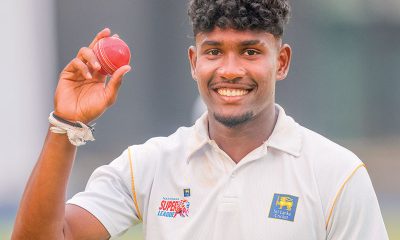
 Sports5 days ago
Sports5 days agoSri Lanka’s eternal search for the elusive all-rounder
-
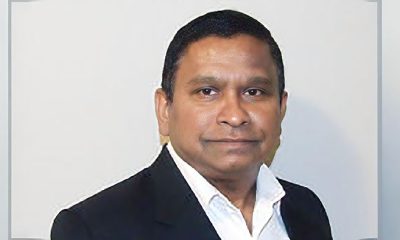
 News4 days ago
News4 days agoBid to include genocide allegation against Sri Lanka in Canada’s school curriculum thwarted
-
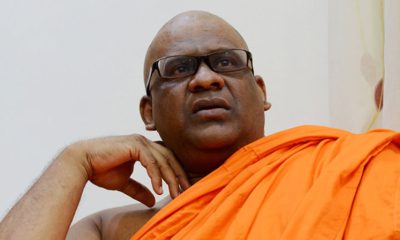
 News6 days ago
News6 days agoGnanasara Thera urged to reveal masterminds behind Easter Sunday terror attacks
-
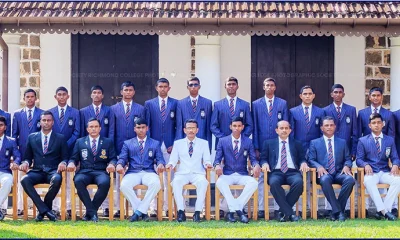
 Sports22 hours ago
Sports22 hours agoTo play or not to play is Richmond’s decision
-
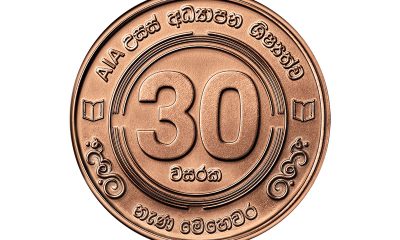
 Business7 days ago
Business7 days agoAIA Higher Education Scholarships Programme celebrating 30-year journey
-
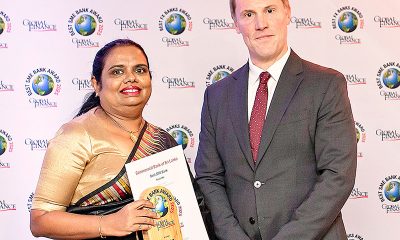
 News5 days ago
News5 days agoComBank crowned Global Finance Best SME Bank in Sri Lanka for 3rd successive year
-
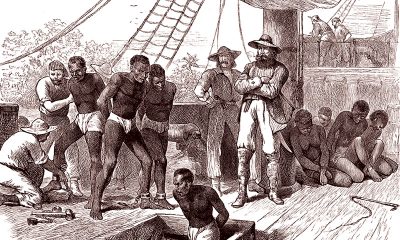
 Features5 days ago
Features5 days agoSanctions by The Unpunished
-
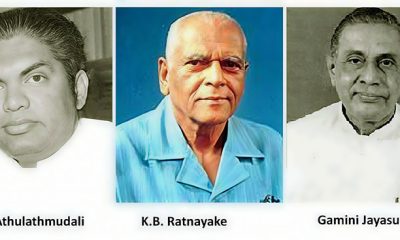
 Features5 days ago
Features5 days agoMore parliamentary giants I was privileged to know











